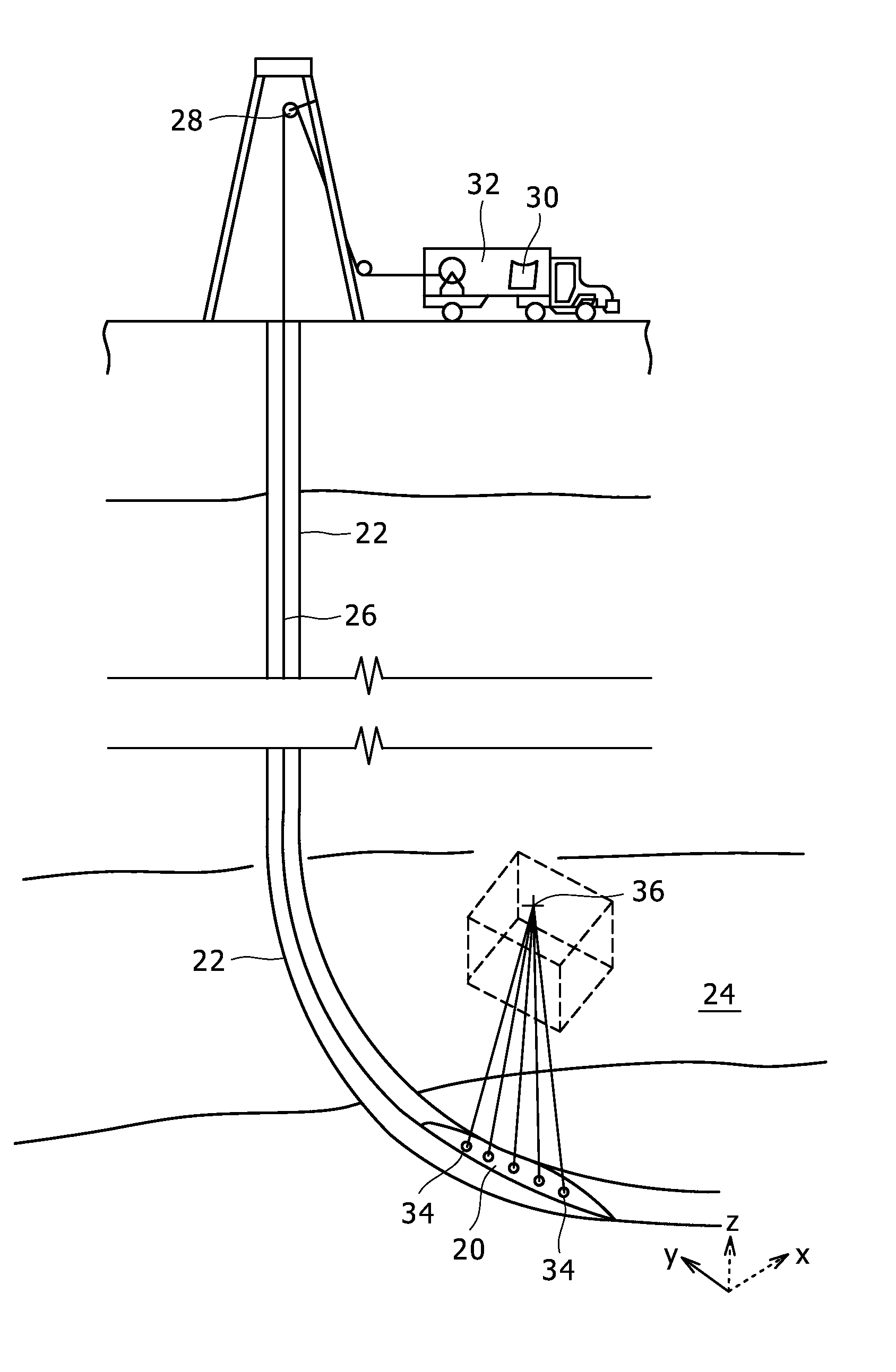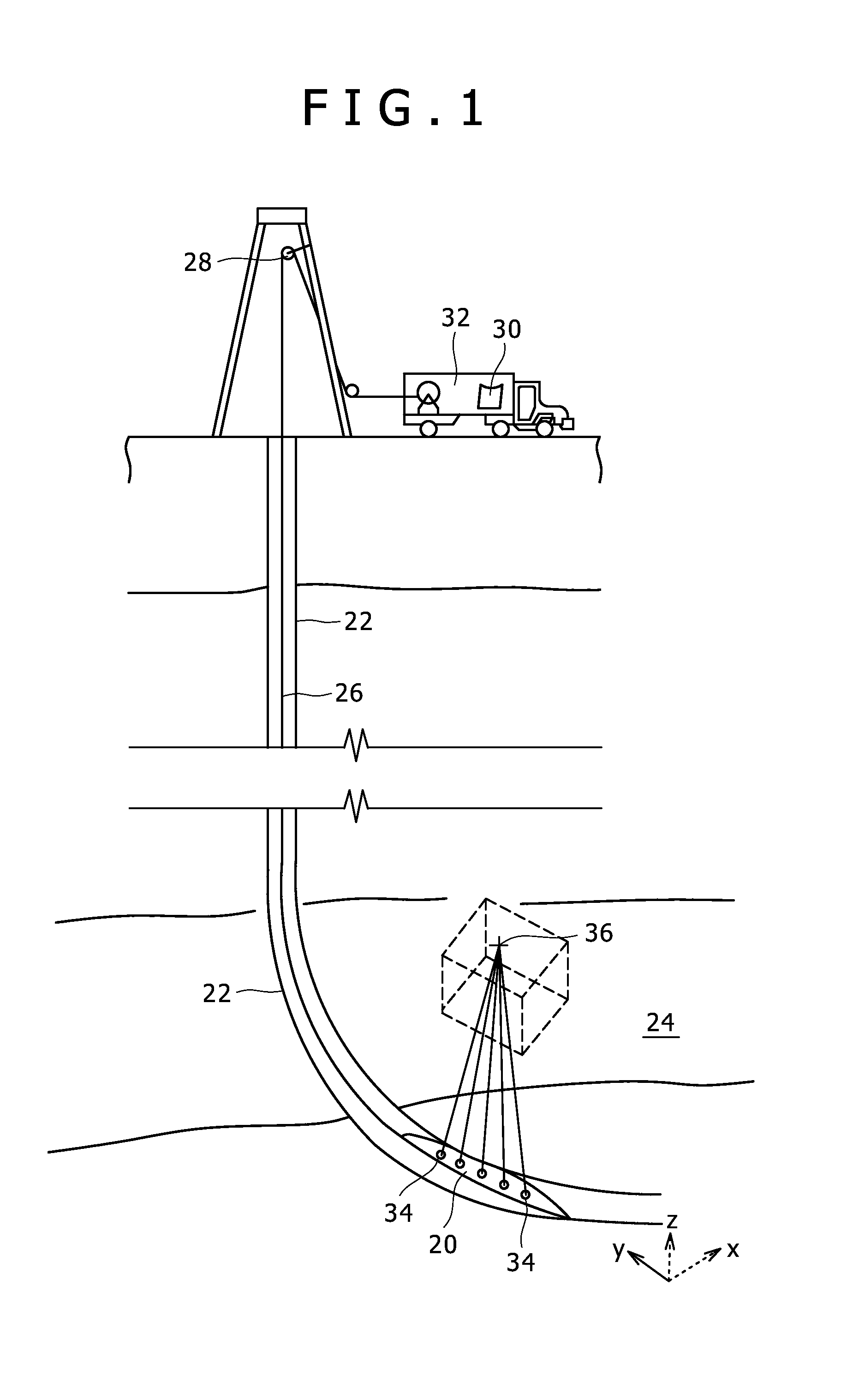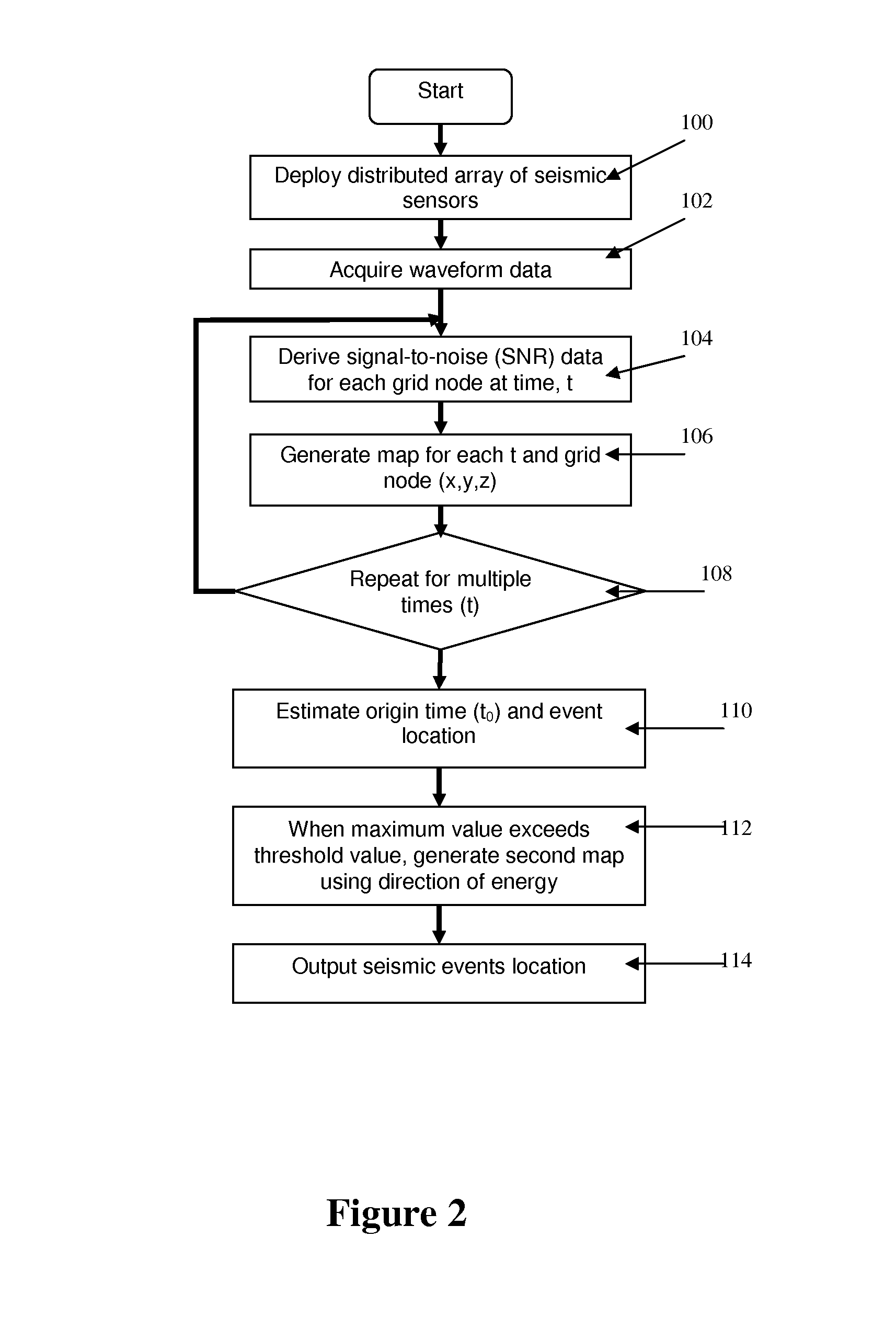Methods and Systems for Microseismic Mapping
a technology of microseismic mapping and detection methods, applied in the field of methods and systems for detection and analysis of seismic waveform data, can solve the problems of inability to realize real-time operation, unstable and unreliable steps, and inability to accurately locate the even
- Summary
- Abstract
- Description
- Claims
- Application Information
AI Technical Summary
Benefits of technology
Problems solved by technology
Method used
Image
Examples
example
Real Dataset
[0128]A hydraulic fracturing monitoring took place in Far East Asia from a deviated well. Due to constraints associated to high temperature, only three 3C receivers were deployed between 3800 m and 3925 m where the well deviation was around 30°. During the first stage of heavy brine injection, about 300 events were detected; while during the second injection stage of light brine, about 400 events were detected.
[0129]Using the 2D approach, the times were not well estimated and the events were on average located 250 m shallower than the locations found using time picks and the Geiger method (Table 3 below). The 2D origin time and spatial coordinates were significantly different from those of the Geiger approach. For instance, for the event presented in FIG. 13, the origin time was estimated at 146 ms and the coordinates were: North: −899 m; Easting: 1175 m; Elevation: −4066 m whereas using the Geiger method the estimates were: 131 ms; −917 m+ / −34; 983 m+ / −25 m; −4902 m+ / −8...
PUM
 Login to View More
Login to View More Abstract
Description
Claims
Application Information
 Login to View More
Login to View More - R&D
- Intellectual Property
- Life Sciences
- Materials
- Tech Scout
- Unparalleled Data Quality
- Higher Quality Content
- 60% Fewer Hallucinations
Browse by: Latest US Patents, China's latest patents, Technical Efficacy Thesaurus, Application Domain, Technology Topic, Popular Technical Reports.
© 2025 PatSnap. All rights reserved.Legal|Privacy policy|Modern Slavery Act Transparency Statement|Sitemap|About US| Contact US: help@patsnap.com



